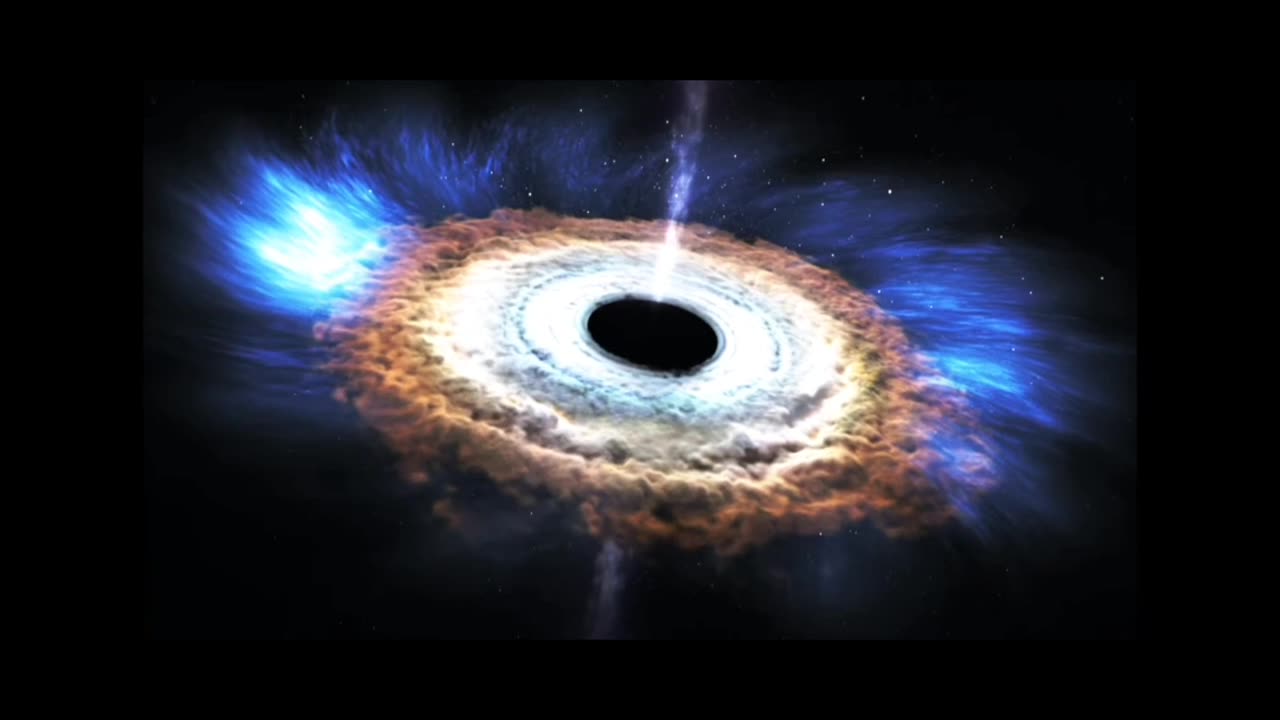Premium Only Content

Massive Black hole Shed
Massive Black Hole Shed" typically refers to the process where a massive black hole expels material or undergoes dynamic changes in its accretion disk. This phenomenon can result in the release of powerful energy and radiation. When a black hole sheds material, it can have significant astrophysical implications, including the formation of jets, X-ray emissions, and the study of the black hole's activity.
Key points:
Accretion Disk Dynamics: Massive black holes often have accretion disks of gas and dust spiraling into them. Variations in the accretion rate or disruptions in the disk can cause the black hole to shed material.
Emission of Energy: When a black hole sheds material, it can emit intense bursts of energy in various forms, including X-rays and gamma-rays. These emissions are observable by astronomers and provide insights into the black hole's activity.
Formation of Jets: Shedding material can lead to the formation of powerful jets of particles and radiation. These jets can extend over vast distances and have a profound impact on their surrounding environment.
Active Galactic Nuclei (AGN): Massive black holes that undergo shedding processes are often associated with active galactic nuclei. The shedding of material is a key component of the energetic processes in these galactic centers.
Scientific Research: The study of massive black hole shedding is crucial for understanding the behavior and evolution of these cosmic objects. It helps astronomers gain insights into the physics of extreme gravitational environments and the interaction between black holes and their surroundings.
In summary, "massive black hole shed" refers to the dynamic processes through which massive black holes release material and energy, often resulting in observable phenomena that contribute to our understanding of astrophysics and the nature of black holes.
Massive Black Hole Shed" typically refers to the process where a massive black hole expels material or undergoes dynamic changes in its accretion disk. This phenomenon can result in the release of powerful energy and radiation. When a black hole sheds material, it can have significant astrophysical implications, including the formation of jets, X-ray emissions, and the study of the black hole's activity.
Key points:
Accretion Disk Dynamics: Massive black holes often have accretion disks of gas and dust spiraling into them. Variations in the accretion rate or disruptions in the disk can cause the black hole to shed material.
Emission of Energy: When a black hole sheds material, it can emit intense bursts of energy in various forms, including X-rays and gamma-rays. These emissions are observable by astronomers and provide insights into the black hole's activity.
Formation of Jets: Shedding material can lead to the formation of powerful jets of particles and radiation. These jets can extend over vast distances and have a profound impact on their surrounding environment.
Active Galactic Nuclei (AGN): Massive black holes that undergo shedding processes are often associated with active galactic nuclei. The shedding of material is a key component of the energetic processes in these galactic centers.
Scientific Research: The study of massive black hole shedding is crucial for understanding the behavior and evolution of these cosmic objects. It helps astronomers gain insights into the physics of extreme gravitational environments and the interaction between black holes and their surroundings.
In summary, "massive black hole shed" refers to the dynamic processes through which massive black holes release material and energy, often resulting in observable phenomena that contribute to our understanding of astrophysics and the nature of black holes.
-
 2:02:53
2:02:53
Badlands Media
12 hours agoBaseless Conspiracies Ep. 149: Epstein Docs, Charlotte Stabbing, and Trump’s Next Moves
42.8K10 -
 2:56:12
2:56:12
TimcastIRL
7 hours agoTrump SLAMS Democrats Over Irina Zarutska Killing, Says WAR Over Chicago Crime | Timcast IRL
185K107 -
 29:08
29:08
Afshin Rattansi's Going Underground
1 day agoCol. Lawrence Wilkerson: World War 3 is ALREADY HERE, Netanyahu is INTENT on Greater Israel
22.1K23 -
 7:24:49
7:24:49
SpartakusLIVE
8 hours agoNONSTOP Snipes, Rockets, and BICEPS = Monday MOTIVATION
72.4K1 -
 6:31:35
6:31:35
Rallied
9 hours ago $4.25 earnedSolo Challenges All Day
59.7K2 -
 1:27:53
1:27:53
Flyover Conservatives
12 hours agoIs AI Actually Alien Intelligence? Dr. Jason Dean Exposes the Dark Side | FOC Show
48.6K5 -
 1:47:36
1:47:36
Glenn Greenwald
9 hours agoJD Vance and Rand Paul Clash on Due Process: War on Terror Echoes; Has the U.S. Given Up on Confronting China? Ben Shapiro's Latest Falsehoods About Israel | SYSTEM UPDATE #510
114K93 -
 LIVE
LIVE
RaikenNight
6 hours ago $4.81 earnedExploring the Galaxy of No Mans Sky
1,097 watching -
 LIVE
LIVE
Spartan
8 hours agoRanked and Expedition 33 (NG+4 and all enemies Set to 10x health)
143 watching -
 2:54:31
2:54:31
Jokeuhl Gaming and Chat
11 hours agoDARKTIDE - Warhammer 40k w/ Nubes and AoA
22.8K1